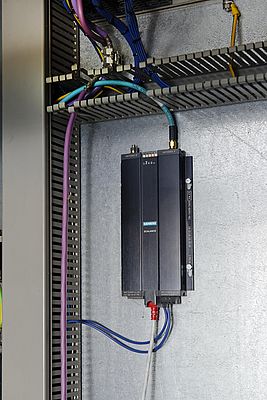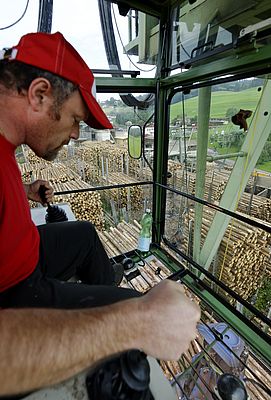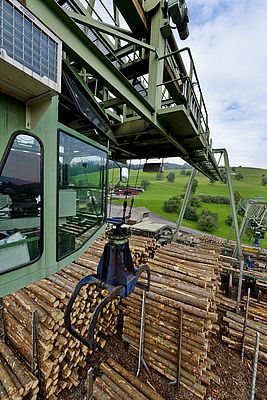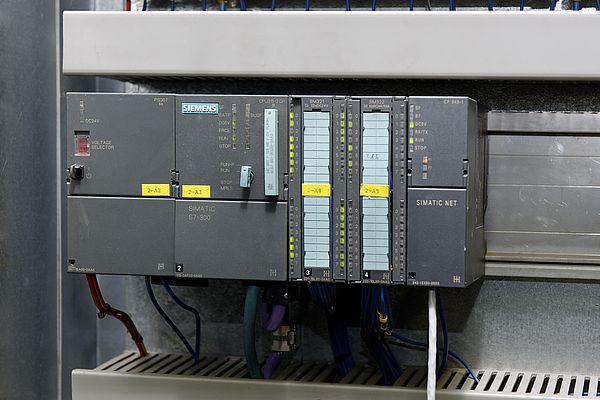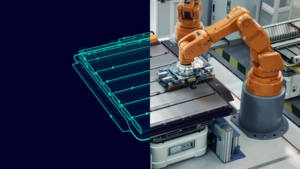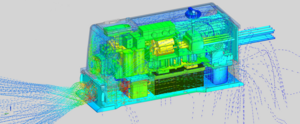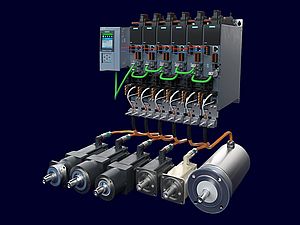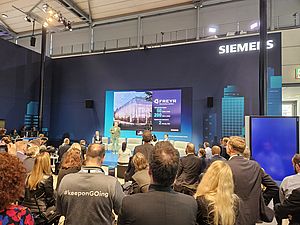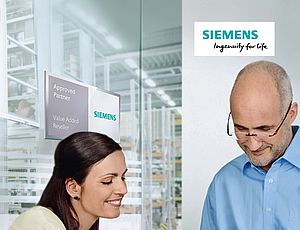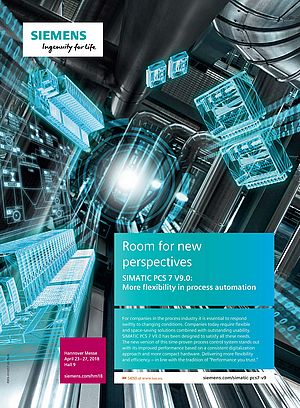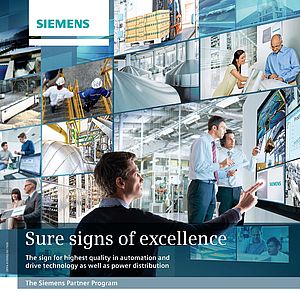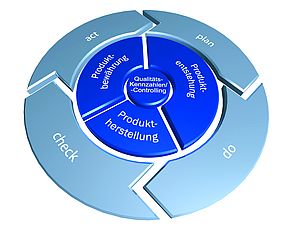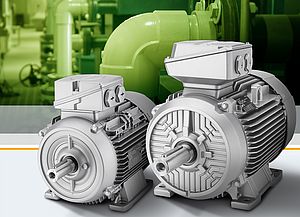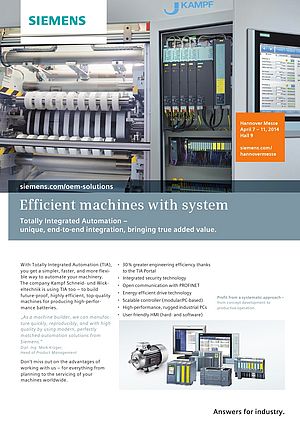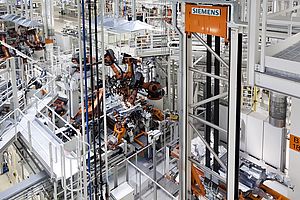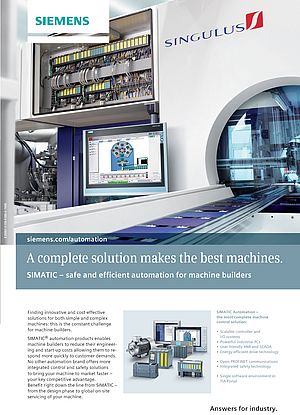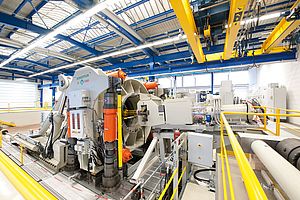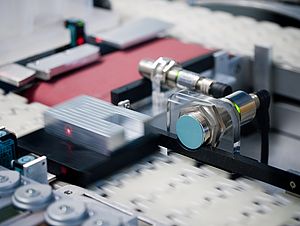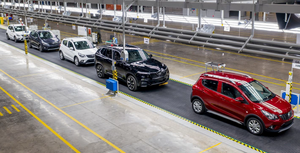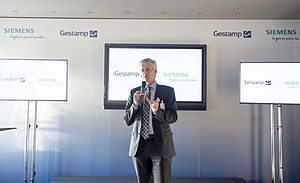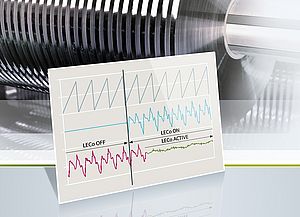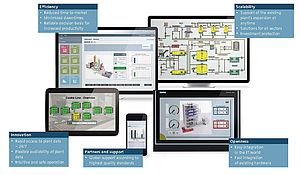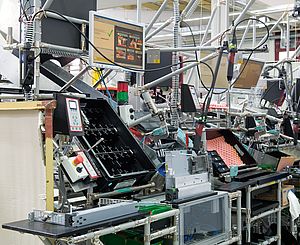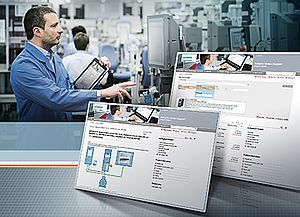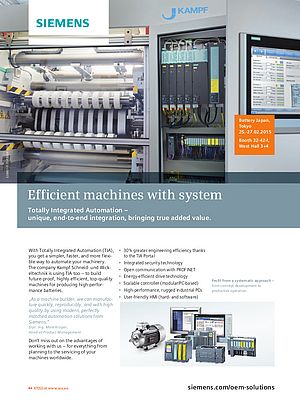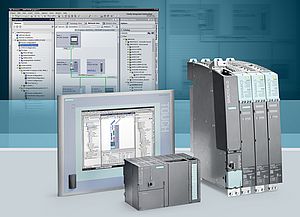The key point of Schilliger Holz AG is its round timber yard: The logs delivered are placed in the right place by the ton by means of a huge gantry crane. However, high strain on the bus cable for crane control which was integrated in the trailing cable equipment continually resulted in downtimes. An industrial WLAN data transfer provided the required operational reliability.
Schilliger Holz AG in Küssnacht am Rigi is the second biggest wood processing company in Switzerland. This is evident by the delivery of logs to the round timber yard. Trucks are continually arriving to drop off their cargo. An imposing gantry crane brings the logs to the defined storage boxes. It carries between 800 and 1200 cubic meters of wood per day. Tobias Popp, who is responsible for the electrical part of the company as an energy electronics technician, states: "Despite its outdoor installation, this gantry crane must be ready to operate safely in all weather conditions at all times of the year. This availability requirement is immense". Today, the crane meets this requirement thanks to the newly implemented industrial wireless LAN components.
Safe solution
Control technology and power electronics with frequency converters are housed in a container which is fixed to the main girder of the gantry crane. The crane is operated from the trolley, which consists of the crane operator cabin and the gripping device. It is connected to the container by means of a trailing cable system, which previously included both all power cables and the bus cable. This occasionally led to problems. Tobias Popp explains: "Firstly, the intensive movements of the crane - which has a maximum travel path of about 83 meters - placed excessive strain on the bus cable, which led to cable breaks. Secondly, electromagnetic interference from the power cables had a negative effect on control". The availability of the gantry crane was not guaranteed. A new solution was needed to remedy this.
Tested with simulation
As the gantry crane was controlled by a Simatic S7-300 PLC, Tobias Popp contacted the provider of the PLC. David Benoit, project engineer at Siemens, explains: "The solution was industrial wireless LAN architecture, a technology which had already been implemented with success for some time by Siemens in the industrial environment. For these specific usage conditions, however, we had to verify the feasibility of this solution". This was done with the help of the simulation software Sinema E, which proved that the challenge could be met with two directional IWLAN antennas. At the same time, it was checked on location whether existing foreign signals could impair such a connection. This was found not to be the case. Tobias Popp says: "The proposal convinced us, so we opted for this solution".
Minimal adaptations
The highly flexible wireless solution was enhanced on the controller side by the CP 343-1 communication processor for connection to Profinet and an Access Point Scalance W784-1 - both from Siemens - to provide the wireless network. David Benoit: explains: "In the cabin, the data is then converted back to Profibus with the gateway IWLAN/PB link, whereby the existing control infrastructure can continue to be used unchanged in both the control container and the operator cabin. In the control software, only minor adaptations to the IWLAN environment were necessary". In order to prevent unauthorized interference by third parties, the wireless network is protected by encryption and passwords. Thanks to this approach, it was also possible to commission the wireless solution at a great height in just two working days.
Full availability
The expectations of Schilliger Holz are being met in full. "The wireless data transfer worked without problems from the start. This meant that the need for a time-consuming and costly replacement of the bus cable was eliminated at a stroke, not to mention the associated undesired downtimes of the gantry crane", Tobias Popp describes. "Since the changeover, we have also not recorded any more interference from the power cables. This means that we have achieved practically full availability of the crane".
The new solution from Siemens also distinguishes itself by an additional benefit. David Benoit explains: "This expandable wireless solution was implemented with standard components which are available at all times" - an important advantage should lightning ever strike.
Author: Dana Deutscher, Marketing Promotion Sensors and Communication, Siemens Industry Automation, Nuremberg, Germany


